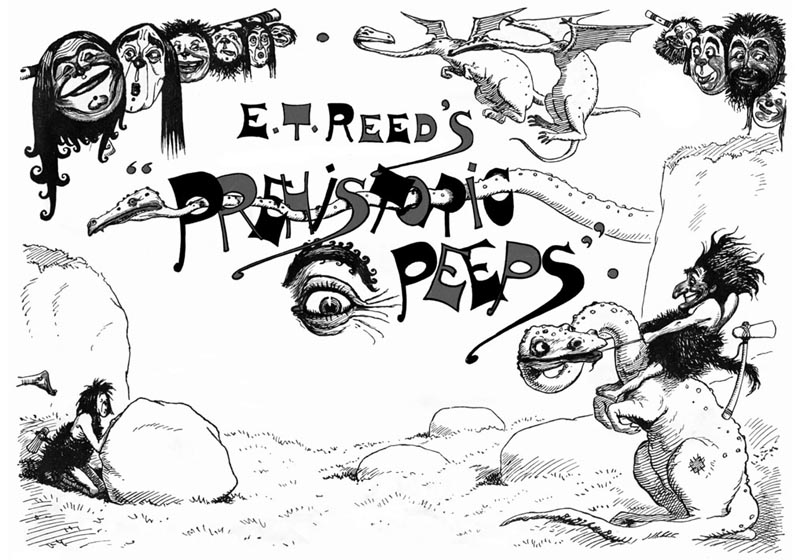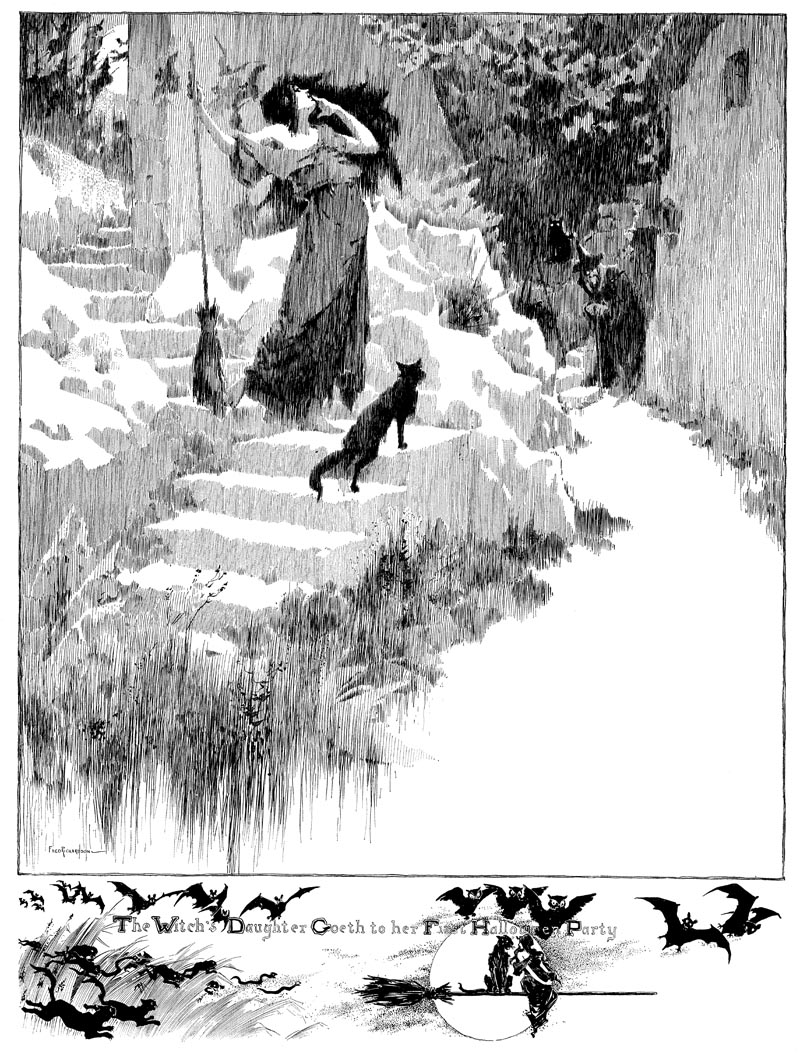One such person is TI list member Joseph Procopio, the founder & co-publisher of Picture This Press/Lost Art Books. Joe asked me to make readers aware of three books his company has published; The Lost Art of E.T. Reed—Prehistoric Peeps...

... The Lost Art of Zim—Cartoons and Caricatures...

... and The Lost Art of Frederick Richardson

Of the three, Richardson's work is the most intriguing to me. I was astounded to read on Joe's website that the artist created these sorts of pieces for publication in the Chicago Daily News in the 1890s. Amazing!

In an interview Joe did with washingtoncitypaper.com he explained that his intentions are "to preserve this cultural heritage by re-introducing these artists to new generations of working artists, historians, and admirers of things beautiful." That's certainly evident in these examples.

Personally, I'll be looking forward to one of Joe's future efforts: The Lost Art of the Racy & Risqué, which will include pieces by Russell Patterson, Frank Godwin, James Montgomery Flagg, Dean Cornwell and many others. That volume will be coming out in a few months, April being the goal, so perhaps we'll get to preview it at a later date.
For anyone still looking for a Christmas gift for the turn-of-the-century-illustration aficionado in their life, Joe's books may be the perfect thing.
Visit Joe's website for details.
* There are several other publishers of late 19th/early 20th century illustration who are members of Today's Inspiration. This week we'll look at some of those publishers and the artists from that era whose work they publish.
Wonderful! Reminds me of Winsor McCay's editorial work.
ReplyDeleteThanks.
I agree that Fredrick Richardson's illustrations are amazing. By the 1960s' there was a variety and blend of techniques.. those illustrations that were more academic and literal, those that were loose and painterly and those that were stylized, decorative and very technique oriented. In some ways early illustration was similar in respect to diversity of approaches. Richardson's first illo posted is decorative, skillfully designed and pattern oriented, yet rendered with accurate elegant drawing. In his second illo. it is far simpler in design, less stylized with strong dramatic black and white tonal patterns. He obviously had very good taste and well honed skills. I am inclined to believe the skills can be learned, practiced and improved, but good taste is much harder to come by. After traveling to many foreign countries, I think taste is culturally oriented for the most part. I have seen the work of very technically competent illustrations, but the work lacked in elegance and sophistication.. they lacked in good taste, and an emotional connection. And, that scenario seems to be even more pronounced in much of today's illustrations.. at least to me.
ReplyDeleteFredrick Richardson came from a different era and a different culture, and it shows up in his illos in a positive way.
Tom Watson
LEIF.....Sounds like you aren't fond of the Art-Deco period in the earlier 1900's up through the 20's. If so, a shame, because there were some fine illustrators and fine work done all through that period. Many or most artists used various B&W techniques....color reproduction was not available, with the exception of book illustrations. N.C. Wyeth was a good example. Like so much illustration of the 20th century, B&W is a lost art in today's world. Thanks for the Richardson TI....excellent, unusual, and educational.
ReplyDeleteThis looks like a very good series.
ReplyDeleteAnother series exploring the art of this period is Jim Vadeboncoeur's "Images".
These are expensive but beautifully printed.
Leif, thanks for focusing some well-deseved attention on this new series. I recently became aware of it myself. Joe Procopio seems to genuinely love the field and he takes the time to get the images right.
ReplyDeleteHP Envy 5055 Driver
ReplyDeleteHP officejet 5255 Driver
HP officejet pro 9015 Driver
HP Printer Setup
HP Printer Setup
HP officejet pro 8035 Driver
ReplyDeleteHP officejet pro 9025 Driver
HP Deskjet 3755 Driver
HP Deskjet 2652 Driver
HP Deskjet 2636 Driver
canon mx532 driver
canon mx452 driver
ReplyDeletecanon mx472 driver
canon mx512 driver
canon mx522 driver
canon mx892 driver
canon mx922 driver
canon mg3620 driver
ReplyDeletecanon ts5320 driver
canon ts8220 driver
canon ts6320 driver
canon ts5120 driver
canon tr7520 driver
ReplyDeletecanon mg7720 driver
canon mg2420 driver
canon mg6620 driver
canon mg2525 driver
Academic Writing Services In UK By MayaCorbyn
ReplyDeleteDissertation Writing Services in UK By EmmaCarter
Homework Help in UK At Satori
Assignment Help In UK by JuliaFisher
Assignment Help by RosieGreen
Assignment Help At treatassignmenthelp
Accounting Assignment Help In UK